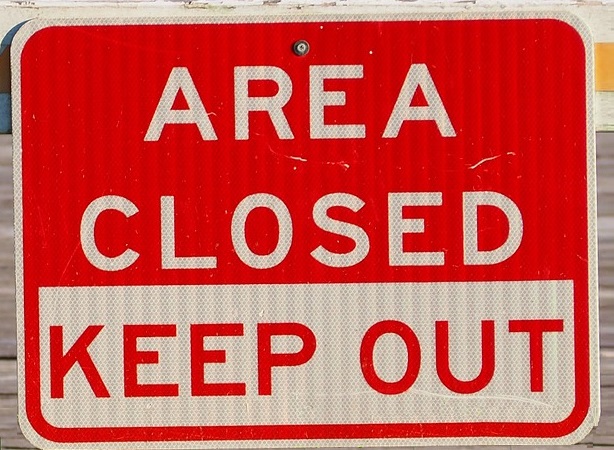
Area Closed Keep Out sign
Recent Australian Bureau of Statistics data released in October 2016 confirms that in 2015, almost one in five Australians reported living with disability (18.3% equating to 4.3 million people) – but the true figure is likely to be higher, owing to the fact that self-reporting as a methodology is usually under-representative.
A further 22.1% of Australians reported that they suffer from a long-term health condition which impacts on their life, but no disability (under the agreed statistical meaning), while the remaining 59.5% of citizens had neither disability nor a long-term health condition.
Given the practical benefits of being able to buy goods and services online, more and more people are using the internet to browse, shop and conduct their business. So what happens when people encounter barriers to participation online?
According to 2017 research conducted by the governance committee of Section508.gov in the USA, ‘71% of web users with a disability will simply leave a website that is not accessible’ – and it’s likely to be a similar percentage in Australia too.
Section 508, is an amendment to the United States Workforce Rehabilitation Act of 1973, a US federal law mandating that all electronic and information technology developed, procured, maintained, or used by the federal government must be accessible to people with disabilities.
Further protection is legislated by the federal Americans with Disabilities Act (the ADA). This requires that sales, rental and service establishments accommodate the vision-impaired, and as a slew of recent court cases in the USA attest, this is applying to online environments as well as traditional bricks & mortar operations.
The Disability Discrimination Act 1992 (DDA) in Australia has similar provisions and aims as the ADA in the USA, and both promote and protect equal opportunity, access, and inclusion for people with disability. The Australian Act prohibits discrimination against persons with disabilities in employment, education, publicly available premises, the provision of goods and services, and a number of other contexts.
Sarah Christopher is a Digital Accessibility Analyst at Media Access Australia and has a strong appreciation of the benefits of inclusive design and user experience testing. “You have to be sure that the experience of using a website is one that is inclusive for all,” she says.
“The most efficient way of knowing if your website offers an inclusive experience is to test it on users of all abilities, ages, cultures, and walks of life,” says Sarah. “Doing this will help you reach out effectively to all of the people who would be interested in your product, service or group. And by being inclusive, you are removing barriers to social participation and essentially promoting social inclusion more broadly, which benefits everyone.”
Many people who are excluded from effective, easy website interactions take action against being ‘locked out’ by moving on to more accessible sites and telling their friends and social networks about it, rather than filing an official complaint – and word gets around.
As a result, some companies, Government departments and charities can remain unaware that people are leaving them due to website inaccessibility, and the last thing any organisation wants to do is create a host of negative brand ambassadors.
“Making what you do online, accessible, ensures that you don’t turn people away from your website and hand them over to your competitors, if people can’t use your site or it’s just too difficult for users to persist with,” adds Sarah Christopher.
For more information and assistance to ensure that your organisation’s website is accessible and not excluding sections of the community, email Media Access Australia at info@mediaaccess.org.au or call (02) 9212 6242.
Top of page

